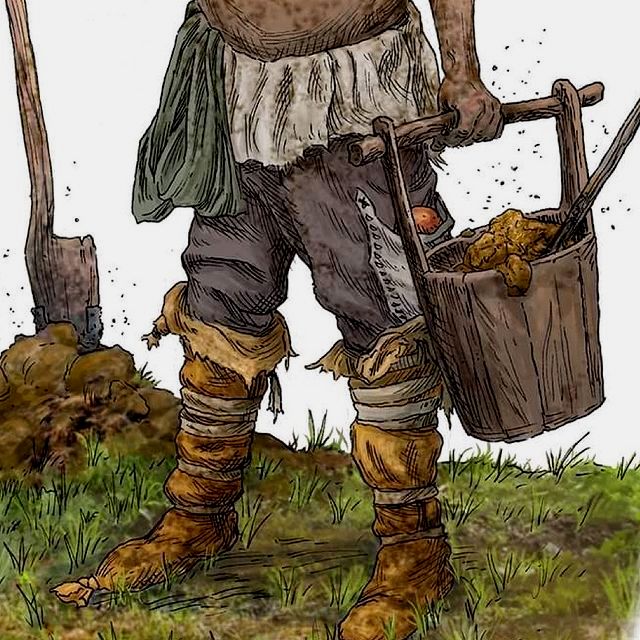Gong Pit
Gong pits are collection areas for the deposit of humanoid excreta, feces and fecal sludge. A "gong" is a medieval word for toilet, under which a hole is dug into the ground. "Gong" also describes the material itself. Gong toilets must be occasionally emptied and the gong carried away to a "gong pit," a cesspool where the waste of a many people over much time accumulates.
Individuals described as "gong farmers," persons largely immune to disease and treated as social outcasts by the population. Gong farmers work at night, moving from house to house in a village or more populated centre, collecting gong from buckets used to collect a household's excreta throughout the day. The gong is carried in deep wheelbarrow troughs to the nearest gong pit. Large cities will have multiple pits, located as far as is practical from occupied residences. Some gong is deposited in the sea or downstream — in the latter case only if the next village-sized centre upon the watercourse is at least seven miles away.
Construction
Traditionally, gong pits are dug out to be as deep as possible, selectively in places where heavy clay exists to naturally leach fresh water from what material remains. Because their walls are precipitous, it can be dangerous to fall into one of these cesspits, causing many to drown as they cannot climb out. Moreover, these pits are associated with a great many flies, which act as a warning to those who may be unfamiliar with an area. Typically, gong pits average about 15 ft. across, taking a gong farmer 2-3 days to dig out.
Maintenance
Each gong farmer maintains his or her own pit. Because the game world lacks water-toilets, the consistency of gong is heavier than a modern cesspool; a single gong pit can suffice for up to five hundred people for the space of a year. Fumes can overpower those who remain in the area too long, who are not accustomed to the air. Lime and other materials are thrown into the pit during the time it remains open.
Once a gong pit is full, a six-inch layer of loose soil and light clay is shoveled over the top of the pit, with stakes to mark the pit's location. Accidents do occur where persons step onto this covering, only to have it collapse so that they become trapped. As many as seven foolish people may be killed in this fashion over a space of 20 years. As the level falls and the material beneath hardens, more earth is thrown overtop until any sinking ceases. Once a pit is covered over, a new pit is dug; this requires the accession of a town official, who in turn posts the pit's location and sends out word to those who are illiterate.
After numerous seasons, depending on the climate, the dried-out pit is dug out again, with the resultant material used to fertilise crops.
See also,
Hammer (symbol)
The Adventure
Type-7 hex
